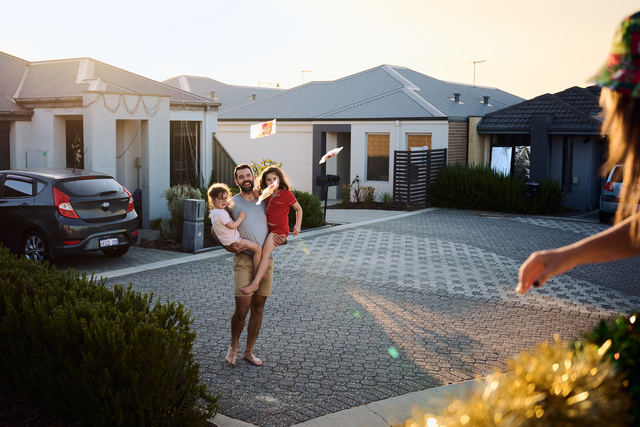There is a black hole in council budgets across New South Wales that is sucking in valuable resources that could be spent in better ways. The true cost of graffiti vandalism and what to do about it was the topic of a seminar attended by NSW council representatives in Sydney on 18 August at The Australian Technology Park. The Seminar was hosted by ATP Innovations Pty Ltd and sponsored by E-Nose Pty Ltd.
Proceedings were chaired by ABC TV presenter James O’Loghlin and speakers at the seminar included Rick Wiezel from Blacktown City Council, Olivia Kidon from Penrith City Council and Scott Murray, Group Chairman of 1st Alchiringa Scouts.
An overview of graffiti, and its true cost to Local Government, was presented by Blue Mountains City Council officer Patricia Lane-Gonzalez. The key points she covered included:
- Katoomba and Springwood (largest commercial centres) have the highest number of graffiti apprehensions, followed by Blaxland and Winmalee
- peak periods are December and January over school holidays
- graffiti vandals are predominately young males aged up to 24 years: 89 per cent male while 11 percent were female (NSW Police data gathered by the Blue Mountains commands over a four year period, resulting in 203 legal actions)
- the most common action taken by NSW police was issuing youth a ‘caution’ (Blue Mountains Police data).
- Blue Mountains City Council has the highest rate of reported graffiti in the State.
The true costs, according to Patricia Lane-Gonzalez, comprises both financial and social costs. Dollar figures are hard to put on all aspects of graffiti related costs but one can begin with cash outlays for cleaning and repairing damage caused by graffiti vandals.
In the case of the Blue Mountains City Council, this cost came to $270,000 in financial year 2010-11, and was used to fund wages for one person, a vehicle and all equipment for the safe removal of 997 pieces of graffiti (an average of three per day) from Council assets, such as bush shelters, street furniture and play equipment.

|
This figure does not cover the hidden cost of administration, the hire of specialised equipment or replacement of unrepairable assets.
Graffiti, in the form of glass etching, is particularly expensive to repair as it requires specialised equipment to polish out the etching which compromises the quality of the glass. The cost for replacement of glass can be prohibitive, leaving the graffiti unaddressed.
“We are not capable of keeping up with community expectation in terms of graffiti management but this gap is closing and we are working more closely and constructively with the community,” Patricia Lane-Gonzalez said.
Consideration of social costs to the community is an essential exercise in assessing the true costs of graffiti vandalism.
The Blue Mountains Local Government Area is uniquely positioned as a City within a World Heritage Area National Park and therefore an important national asset. Echo Point is one of the most popular tourist attractions in the country after the likes of the Opera House and the Harbour Bridge, attracting three million tourists visiting Katoomba and the Three Sisters every year.
The more obvious impact is that the first impressions of this important tourism destination is spoiled by ugly, mindless images of graffiti. The experience of tourists visiting the Blue Mountains is reduced by the presence of graffiti. This translates into lost tourism dollars. This is an issue shared by numerous councils across Australia.
“Of course, visual amenity is not only important to our visitors, who will tell family and friends of their impressions of the Blue Mountains, but it is also important to our residents,” Patricia Lane-Gonzalez said. “We consider graffiti a major issue which can reduce the enjoyment of our towns by all people.”
Now add the cost of depressed community spirit and morale. Citizens feel less inclined to take pride in their ‘ownership’ of community buildings, streetscapes and town centres, which is what they contribute rates toward.
In addition, there is the cost and effort of cleaning up their own affected properties. Frustration with their Local Government representatives and law enforcement ensues. There is the ripple effect of a potential loss in property values in areas with high rates of graffiti, resulting in personal financial loss and in reduced revenue for Local Government from residential and commercial rates and thereby fewer resources to deal with the problem.
The whole process is costly and dispiriting.
Money spent on community art is also wasted as the photographs top right show. On the left is a murial by local artists which vandals attacked and needed frequent repair. The lower section of the mural was then sacrificed (right image above), but it soon became a ‘canvass’ for the graffiti vandals.
“The money Council spends on graffiti removal and the like, is not being spent on other more worthwhile community projects such as library books, sportsground upgrades and so on,” Patricia Lane-Gonzalez said.”Thankfully we have a relatively good feeling of safety in our community, which surveys have shown has trended upward in the past three years.
“This may reflect the success of our Graffiti Management Plan in which we work with community and other key stakeholders to develop the Plan, including Sydney Water, Integral Energy and RailCorp. The Plan has a four year life span and is reported annually to Council and the community. The first review indicated we were travelling well and that some actions had been completed. Many of the actions are the responsibility of community groups such as the Youth Sector and NSW Police.
Volunteer program
“We enjoy the support of three volunteer graffiti removal teams in the Lower, Mid and Upper Mountains. The members are unpaid but receive training by Council staff.”
They remove graffiti from private property only and must seek permission and a signature from property owners. They take photos and hand these over to Police. They have received training and a trailer fully equipped with the necessary tools to remove graffiti, including a digital camera.
Blue Mountains City Council covers the costs of all equipment and training, which at the outset was $10,000, and in addition, one volunteer graffiti removal group was funded by the NSW Attorney General’s Department.
These volunteer groups have achieved a sense of ownership and pride in their areas of operation and have been successful in removing graffiti and decreasing its recurrence.
All volunteers are trained by Council and have volunteer insurance cover through local neighbourhood centres that have partnered with Council for this initiative.
Council’s webpage has a dedicated graffiti management page that educates the public on how to minimise graffiti and have it removed. It also provides a snapshot of graffiti removed from town centres across the Blue Mountains on a monthly basis so residents can keep an eye on their town and Council’s response to the problem.
“Grants sought from the State Government will help reduce incidents of graffiti (etching) into our bus shelters which are constantly targeted,” Patricia Lane-Gonzalez said. “A grant will pay for an artist to design a motif which will then be printed onto clear film and placed onto bus shelters. Council is presently looking at motif designs that will relate to the forthcoming Bicentenary of the crossing of the Blue Mountains.
“Where possible we support youth based projects such as the former Blue Mountains Street Art Collaborative. These projects involve youth painting murals, with an agreed design, on private walls at the request and cost of building owners and with the permission of Council.”
So what is the true cost
Every item noted above incurs a cost to the community, so what is the ‘true cost’ of graffiti vandalism?
In a survey of 63 NSW councils, Dr Graham Bell, CEO of E-Nose Pty Ltd, found that the total annual expenditure by those councils was over $12.5 million. Using the data provided by the survey participants, Dr Bell estimated that the real cost of graffiti vandalism to Local Government in New South Wales is $1.08 billion per annum, that is, $36 for every dollar spent on clean up.
“This indicates a massive benefit of $36 to $1 saved by communities which actually eradicate graffiti vandalism,” Dr Bell said. “This is called a leveraged benefit. Previous estimates of the cost of graffiti vandalism across Australia, such as the often cited $260 million, is clearly a gross underestimation, when the true costs to the community are taken into account.”








